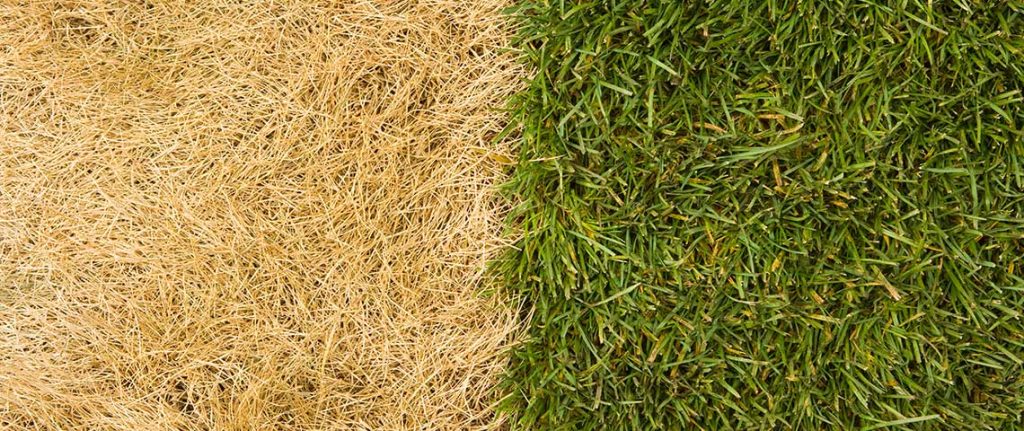
Ammonia, a compound renowned for its nitrogen-rich properties, holds the potential to both invigorate and harm your lawn. The intricate relationship between ammonia and grass growth hinges on the precise type applied and the manner in which it is utilized. As such, the unequivocal answer is affirmative – ammonia can indeed be detrimental to your grass. However, this risk can be mitigated through careful application and informed decision-making.
Table of Contents
Forms of Ammonia and Their Effects
Ammonium Nitrate:
Revered as a potent source of nitrogen, ammonium nitrate is a staple in various fertilizer formulations. This variant of ammonia is especially advantageous for autumn and winter applications, fostering robust weed and feed cycles. To optimize its effects, it is most suitable for well-established and healthy lawns, as its rapid nitrogen release could potentially harm fledgling seedlings or weakened grass. Possessing a nitrogen-phosphorus-potassium ratio of 33-0-0, ammonium nitrate fertilizers necessitate an application rate of 3 pounds per 1,000 square feet of turf, thus delivering a pound of ammonium nitrate to the lawn.
Common Household Ammonia:
Ammonium hydroxide, a component found in commonplace household cleaners, finds utility in concocting homemade lawn tonics. However, this potent solution harbors the capability to detrimentally affect your grass. Variations in ammonia concentrations among brands amplify the risk of inadvertently scorching your lawn. Unlike other ammonia forms, household ammonia does not bestow a substantial nitrogen boost, necessitating cautious, small-scale applications to preclude burns. Thus, it seldom garners preference among gardeners seeking ammonia-based solutions.
Ammonium Sulfate:
Ammonium sulfate, due to its potential to alter soil acidity, is not a prevalent choice in commercial grass fertilizers. It primarily functions to lower pH levels, thereby encouraging the growth of acid-loving plants. Applying this compound to grass demands careful consideration, as over-application can yield chemical burns. For every pound of desired chemical, an application of five pounds of ammonium sulfate is requisite, underscoring the necessity for judiciousness in its use.
Ammonium Phosphate Sulfate:
Notable for its gentler nitrogen characteristics, ammonium phosphate sulfate emerges as an optimal choice for nurturing emerging grasses. This variant is particularly well-suited for jumpstarting the growth of new grass or fortifying newly planted grass seed. While containing less nitrogen than ammonium nitrate, it boasts a supplementary phosphorus supply. The balanced nature of this compound renders it a preferred option for the burgeoning stages of grass development.

FAQS
Can Ammonia be Sprayed on Gardens?
Gardening enthusiasts often contemplate the use of ammonia to deter slugs and bolster plant health. This technique entails spraying either the plants or the surrounding soil. It’s worth noting that this method doubles as a nitrogen source for plants. An appropriate dilution ratio is a 10% solution, comprising one part household ammonia and nine parts water.
Ammonia’s Role in Grass Growth:
Ammonia’s significance as a nitrogen source for grass growth is undeniable. Yet, its potential to compromise grass health through improper application or unsuitable types cannot be disregarded. Consequently, yes, ammonia can indeed induce grass deterioration, a phenomenon that can transpire with relative ease if not managed cautiously.
Household Ammonia on Lawns:
Unadulterated or highly concentrated household ammonia will undoubtedly harm grass. Conversely, when employed in the diluted form of ammonium nitrate, ammonia becomes a valuable nitrogen-rich fertilizer, affording considerable benefits to your grassy expanse.
Duration of Ammonia Persistence in Soil:
The persistence of ammonia in soil hinges on variables such as temperature, pH levels, and soil moisture. On average, the conversion of ammonia to nitrate can span between 2 to 3 months, a transformation particularly noticeable during the late summer and early fall periods.
In sum, ammonia serves as a versatile agent in nurturing grass growth, but its potential to undermine grass health demands careful stewardship. By discerning the diverse types of ammonia and their implications, gardeners can harness the benefits of this compound while safeguarding the vibrancy of their grassy landscapes.
